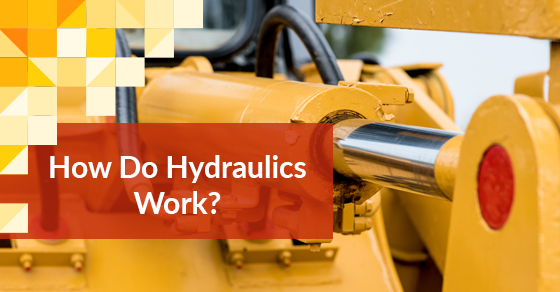When it comes to hydraulic lifts, there are multiple different methods to how they work. In simple scientific terms, a hydraulic piece of machinery is one that uses liquid fluid power or air pressure to do simple work.
The hydraulic fluid, whatever it may be, is distributed throughout a machine to various hydraulic motors and cylinders and becomes pressurized depending on how much resistance is present at a given location. The hydraulic fluid can be controlled either manually or automatically and is allocated to various points and systems in, or on, a piece of machinery through a network of hoses and tubes.
When speaking about hydraulic lifts, there are generally two distinct types: direct acting and suspended.
A direct acting hydraulic lift is fixed cylinder, meaning it is set in the wall or floor and a piston or sliding ram moves in and out of it when we apply pressure. It’s cage, where the load is placed, is fitted on top of the sliding ram, which is itself fitted in the previously mentioned fixed cylinder which moves reciprocally, in an upwards or downwards direction, when the pressure is applied.
Pressurized fluid is forced into the cylinder and pushes the ram upwards. The platform carries loads or passengers and moves between the floors. The main operating principle of a direct acting hydraulic lift is to have the stroke of the ram be equal to the lift of the cage.
The second style of hydraulic lift is the suspended hydraulic lift. The main difference between this style and a direct acting one is the presence of wire rope, pulleys and hydraulic jiggers. The wire rope connects the cage to the pulleys, which are themselves connected to the sliding ram and fixed cylinder; one pulley is fixed and the other moveable. The hydraulic jigger is essentially a moving ram which slides inside a fixed hydraulic cylinder.
When pressurized fluid is forced into the cylinder, it causes the ram to promote action with the pulleys. The hydraulic jigger rotates the pulleys and the wire rope allows the cage to maintain the pressure force with the floor.
Hydraulic lifts are useful and effective ways for transferring people between floors of buildings, construction sites and warehouses, and based on your needs and familiarity with different configurations of equipment function using both suspended and direct action hydraulics.
For more information on what kinds of lifts would best suit your needs, contact our team directly!


